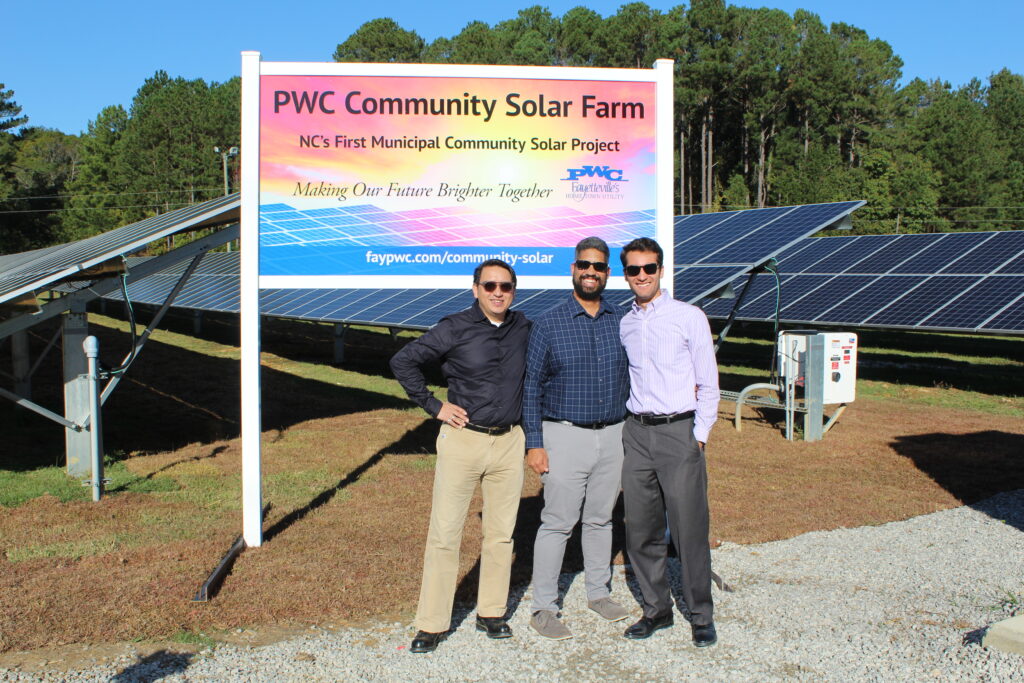Enabling Solar and Storage Projects at Electric Cooperatives
On July 14, 2020, the U.S. Department of Energy (DOE) released their Draft Energy Storage Grand Challenge Roadmap, outlining how the United States will conduct R&D and deploy energy storage technology to address grid challenges such as a lack of flexibility in integrating renewables and the balancing of generation to consumption. To help with these challenges, the N.C. Clean Energy Technology Center (NCCETC) joined the “Solar Plus for Electric Co-ops” project (SPECs) led by Jill Cliburn of Cliburn and Associates. The Project received funding from the U.S. Department of Energy’s Solar Energy Innovation Network (SEIN) to help electric cooperatives design, purchase, and operate battery storage by examining solar and storage through the lens of procurement.
Energy storage is a game changer, providing energy where and when it is needed, such as being used in lieu of newly built peaker plants, that are expensive to build and operate and produce harmful emissions. However, finding the correct energy storage application to buy, deploy and operate is not an easy task. Currently, there are energy storage deployment barriers associated with value integration, risk management and its use as a service.
The SPECs team, which began work in the Spring of 2020, is actively working with its project partners and SEIN’s resources to accomplish its goals before the project’s Spring 2021 conclusion. The team includes energy industry consultants with decades of experience working on solar, solar plus storage and other projects with electric cooperatives. The team also includes three electric cooperatives who are actively working to deploy solar and storage. They will provide real-world feedback on the project’s modeling and procurement resources being developed. Unfortunately, none of the electric cooperatives are in North Carolina, but do include Cobb Electric Membership Cooperative in Georgia, Kit Carson Electric Cooperative in New Mexico, and United Power in Colorado.
One of the grant team members, Simon Sandler, a Clean Power & Industrial Efficiency Project Engineer at NCCETC, is conducting the modeling work for the project to help electric cooperatives understand the procurement choices associated with solar plus storage projects. This work involves answering key operational questions such as what a battery can functionally do and how to value the impact of the battery. The model will also inform procurement details on how specifications should be designed and how to evaluate bids. Eventually, the model will be publicly available with directions on its use, so any electric cooperative may independently evaluate solar plus storage projects using this tool.

Modeling is not the only work that the NCCETC is doing on the project. David Sarkisian, a Policy Analyst at NCCETC, is researching best practices for storage procurement, developing a template for an energy storage request for proposal, and writing a policy paper describing how energy storage may coexist within existing utility wholesale power contracts. Demand charges and restructured markets are just two factors among many that dictate how cooperatives interact with the utility, and both are factors that solar and storage can provide a value addition to the COOPs. David will evaluate these, and many other common factors related to wholesale power contracts in his work.
The NCCETC work and SPECs project will guide rural electric cooperatives on how they may best purchase and jointly deploy solar and energy storage. It is important to understand and evaluate design, procurement, and operational challenges of these innovative technologies so they may be easily deployed and benefit the community at large by providing reduced costs and increased grid functionality.
About U.S. DOE SEIN:
SEIN is managed by the National Renewable Energy Laboratory (NREL), Rocky Mountain Institute, and Lawrence Berkeley Laboratory, among others. SEIN brings together diverse stakeholders to find solutions that use solar energy.